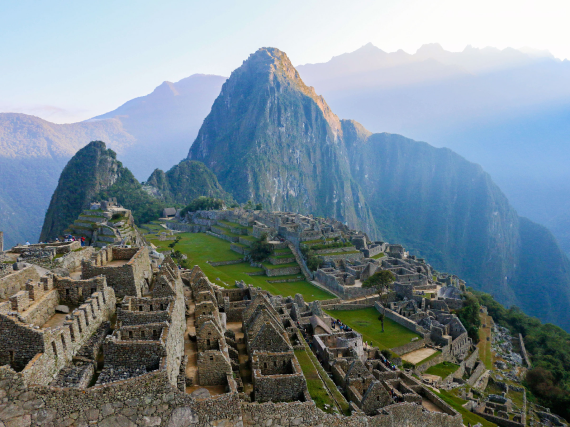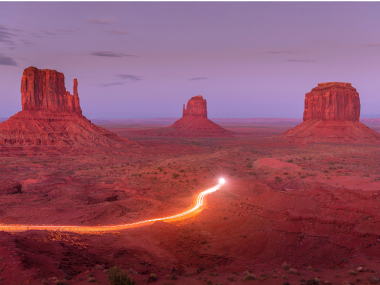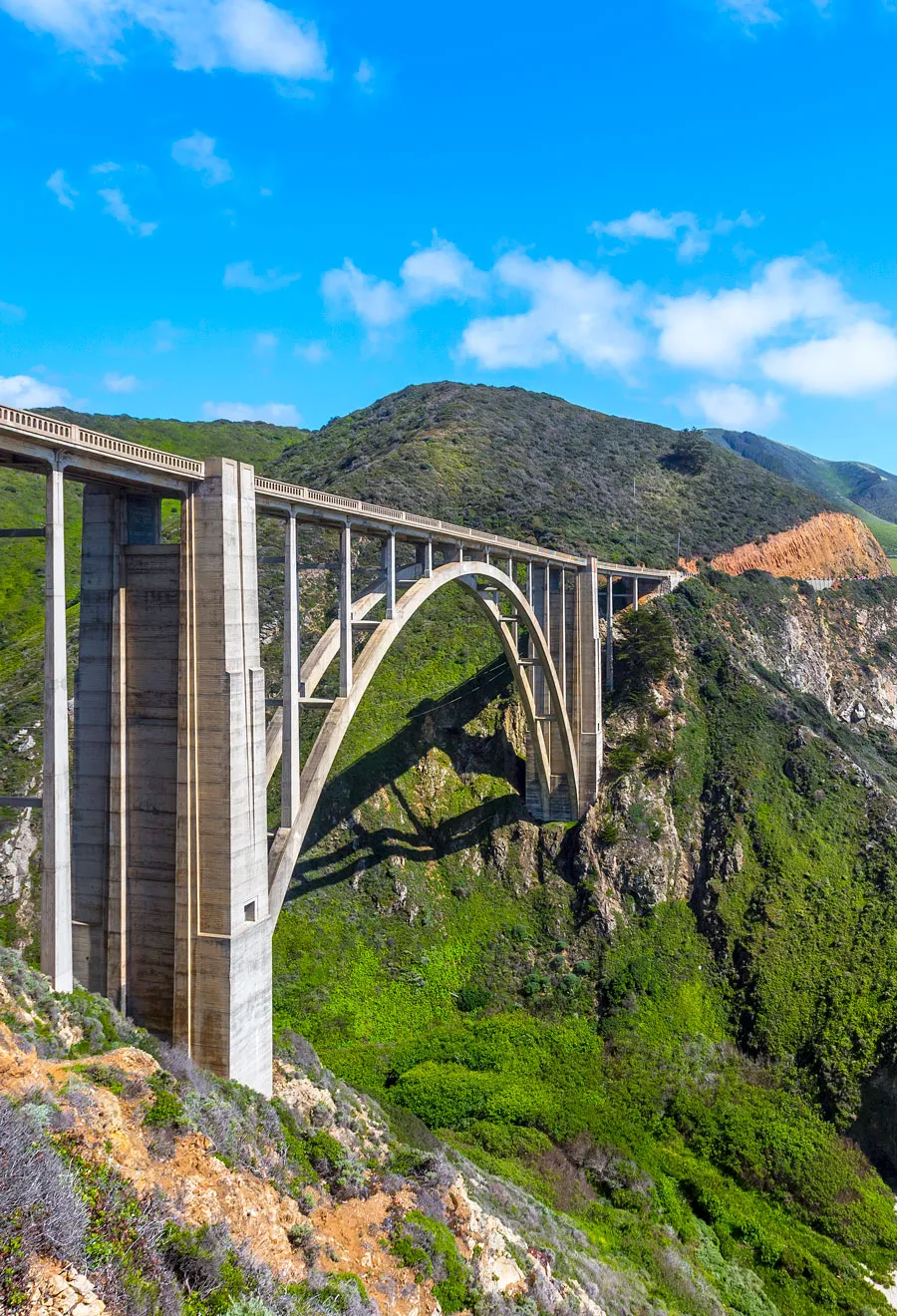America is home to more than 600,000 bridges, but a select few tower above the rest. These marvels of engineering have become icons in their own right, not only serving as vital transportation links but, in many cases, drawing tourists and road trippers from around the world to gaze up at them in awe. From the world’s longest continuous bridge over water to the highest suspension bridge in the U.S., check out the fascinating histories of 12 of America’s most iconic bridges.
Bixby Creek Bridge – Big Sur, California

Fans of Route 66 may quibble, but there’s perhaps no more iconic stretch of road in the country than California Route 1. The route hugs 656 miles of the Golden State’s Pacific coastline. If you don’t have time to drive it all, the 139 miles winding from Monterey to Morro Bay are widely considered to be the most scenic. It’s here, between Carmel and San Luis Obispo, that you’ll find Big Sur’s answer to the Golden Gate: the Bixby Creek Bridge.
Completed in 1932, the eminently graceful reinforced concrete structure is one of the highest single-span arch bridges in the world, spanning 280 feet above the steep coastal canyon carved by Bixby Creek. One of the most photographed spots in Big Sur, the bridge has been featured in dozens of car commercials and even has its own postage stamp. For the most stunning sunset views, stop along the bridge’s south end for gold-tinted 360-degree views of this gloriously rugged coastline.
Brooklyn Bridge – New York, New York
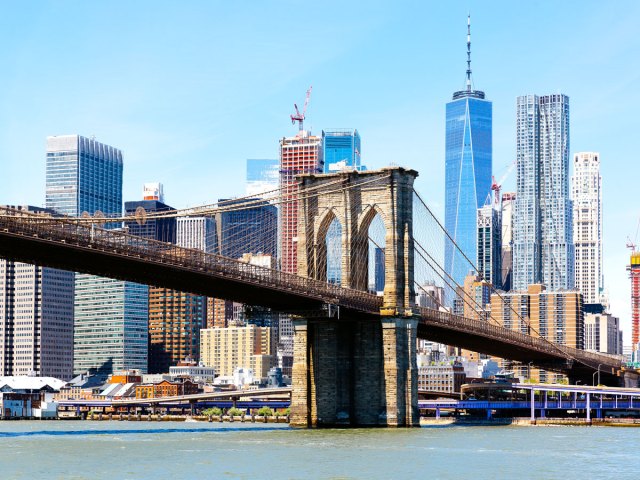
There are over 2,000 bridges in New York City, but one of the most iconic bridges in the Big Apple — and the United States — is the Brooklyn Bridge, which opened in 1883. In the first 24 hours after the Brooklyn Bridge’s opening, an estimated 150,000 people walked across the East River to experience what was then the longest suspension bridge in the world. Today, the Brooklyn Bridge remains a popular landmark with Big Apple visitors and locals alike — on average more than 100,000 vehicles, 28,000 pedestrians, and 5,000 cyclists cross it every day.
Mackinac Island Bridge – Michigan

Located at the northern tip of Michigan’s “glove,” the Mackinac Bridge connects the state’s Lower and Upper Peninsulas. Opened in 1957, the bridge spans the Straits of Mackinac, which connect Lake Huron and Lake Michigan, two of the five Great Lakes. “Mighty Mac,” as it’s known by locals, has a total suspended length of 12,826 feet, making it the longest suspension bridge in the Western Hemisphere and seventh-longest in the world. The bridge’s total length is 26,372 feet, and 5 million vehicles cross it annually.
Sunshine Skyway – Tampa Bay, Florida
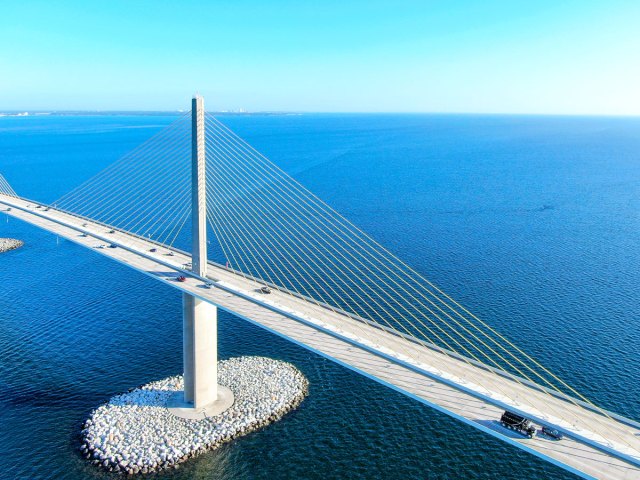
A towering symbol of the Sunshine State, the Sunshine Skyway Bridge is located where Tampa Bay meets the Gulf of Mexico. The cable-stayed concrete bridge is over 4 miles long — the longest of its kind in the world — and connects the city of St. Petersburg on the Pinellas peninsula to Sarasota and other cities to the south. The current bridge opened in 1987, and replaced the previous bridge that tragically collapsed in 1980. However, part of the old bridge remains adjacent to the new bridge and was turned into the world’s longest fishing pier, Skyway Fishing Pier State Park. It’s estimated that over 50,000 vehicles cross the Sunshine Skyway Bridge each day.
Royal Gorge Bridge – Colorado
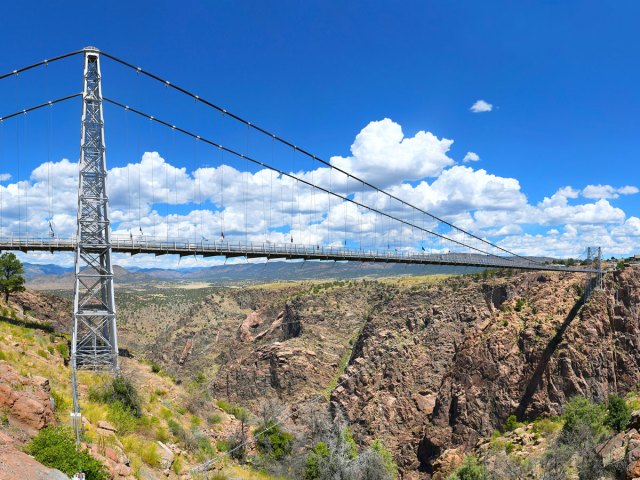
Of America’s many famous historical bridges, none soars higher than the Royal Gorge Bridge that stretches above the Arkansas River in Colorado. Built in 1929, the bridge stands 956 feet over the river in the Rocky Mountains, making it the highest suspension bridge in the U.S. In fact, it held the record as the world’s highest bridge for 75 years before China built the Liuguanghe Bridge in 2001. (Other bridges have since surpassed both in height.) Even without the world record, though, a walk over the Royal Gorge Bridge is sure to take your breath away.
Lake Pontchartrain Causeway – Louisiana
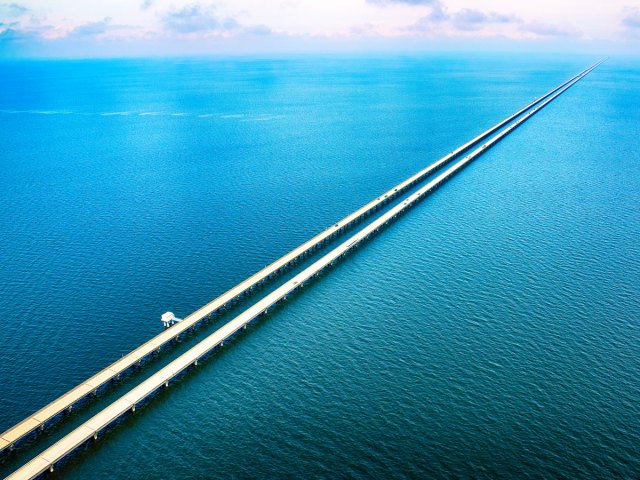
The idea for a bridge across Louisiana’s Lake Pontchartrain was first proposed in the early 1900s. New Orleans was growing in population, and commuters faced a long, roundabout journey around the lake when traveling in and out of the city. The opening of the Lake Pontchartrain Causeway in 1956 dramatically reduced travel times and fueled the development of communities on the north shore of the lake. Originally a single two-lane bridge, a second parallel span was built in 1969 to accommodate booming traffic. The latter stretches for around 23.8 miles, making it the world’s longest continuous bridge over water and the longest bridge in the U.S.
New River Gorge Bridge – West Virginia
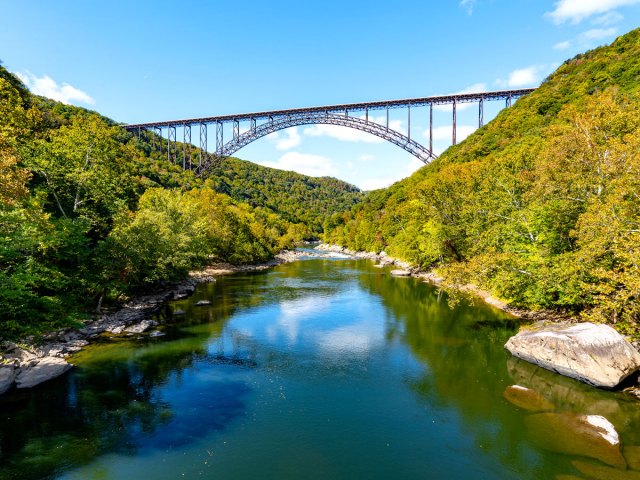
The New River Gorge Bridge in West Virginia is one of America’s most photographed bridges, and for good reason. The bridge holds the title of the longest steel span in the Western Hemisphere; it’s also currently the third-highest bridge in the U.S. It stretches 3,030 feet across the New River, which lies 876 feet below. Surrounded by forest, the bridge has become such a point of pride since it opened in 1977 that it appears on the state quarter of West Virginia and is celebrated annually on “Bridge Day,” during which 100,000 people walk, climb, or base jump from it.
London Bridge – Lake Havasu City, Arizona
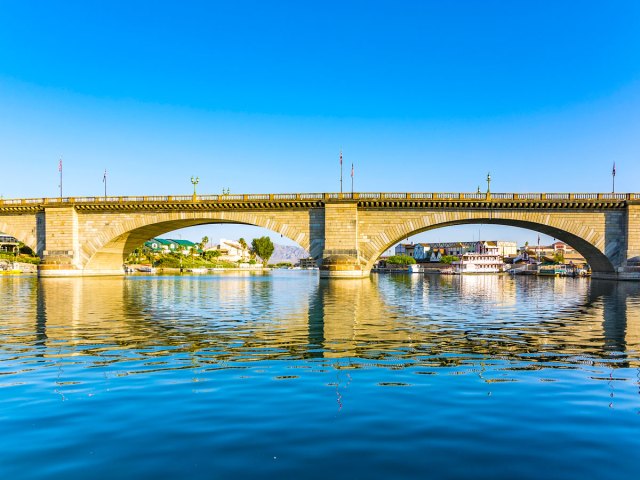
You may think it’s just an old nursery rhyme, but by 1960, London Bridge was indeed falling down. The English capital needed a new bridge, capable of withstanding heavy city traffic, but what to do with the old bridge? City councilor Ivan Luckin had the bright idea of trying to sell it to someone across the Atlantic. In his sales pitch, he billed it as an “heir to 2,000 years of history.” Missouri businessman Robert McCulloch decided it was too good an opportunity to miss, buying it for $2.46 million in 1968.
His crew painstakingly dismantled all 10,000 tons of the bridge and rebuilt it in Lake Havasu City, Arizona, of all places. In 1963, McCulloch had purchased thousands of acres of land alongside the desert lake in hopes of making it a tourist oasis, but visitors were slow to arrive. He hoped the gimmick would be good publicity for Lake Havasu — even holding an opening ceremony with the Lord Mayor of London in 1971. Eventually it paid off, as Lake Havasu is now a thriving tourist destination.
George Washington Bridge – New York, New York
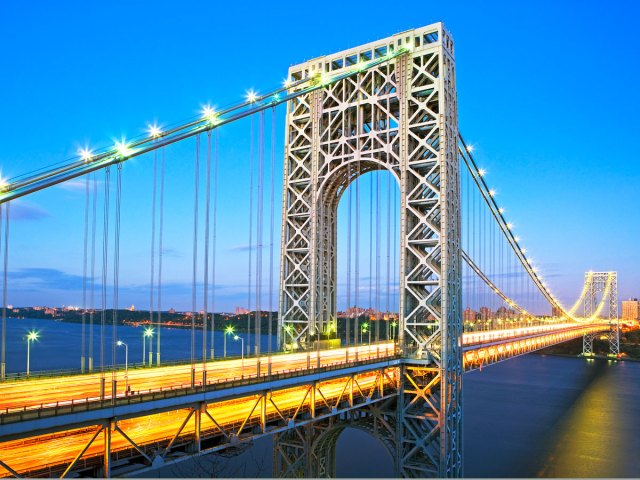
In 1931, the George Washington Bridge officially opened over the Hudson River, connecting upper Manhattan to Fort Lee, New Jersey. The landmark feat of engineering was the world’s longest suspension bridge when it opened. Only a year later, the bridge carried 5.5 million vehicles in a single year. It originally stretched six lanes across, but with traffic quickly increasing, more lanes were added in the mid-1940’s. An entire second level of roadway was opened in the 1960’s, upping the total traffic lane count to 14. A staggering 50 million vehicles cross the bridge heading east annually, making the George Washington Bridge the busiest bridge on Earth.
Seven Mile Bridge – Florida Keys
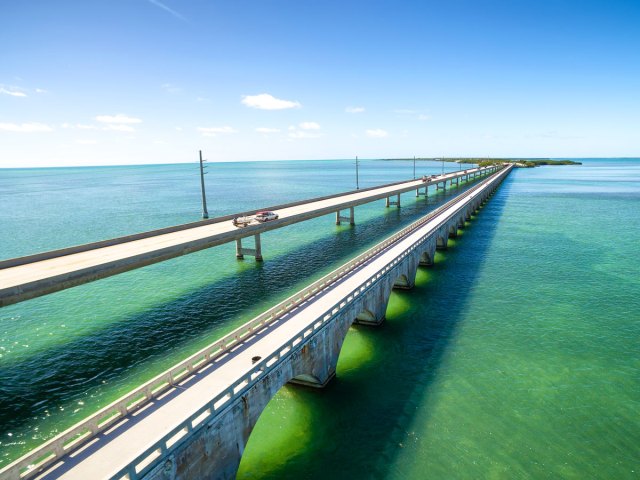
One of the most interesting road trips in the country is along the Overseas Highway (U.S. Route 1), which runs a little over 100 miles from the southern edge of the Florida Everglades to Key West. In between are 44 islands, 42 bridges, and more fun than can be measured in miles. The entire trip is worth taking (slowly), but one of the best photo opportunities can be found near the city of Marathon on Seven Mile Bridge, a box girder bridge that opened in 1982. The bridge isn’t quite 7 miles long — 6.79 miles to be exact — but it was still one of the world’s longest bridges at the time of its completion.
Congress Avenue Bridge – Austin, Texas
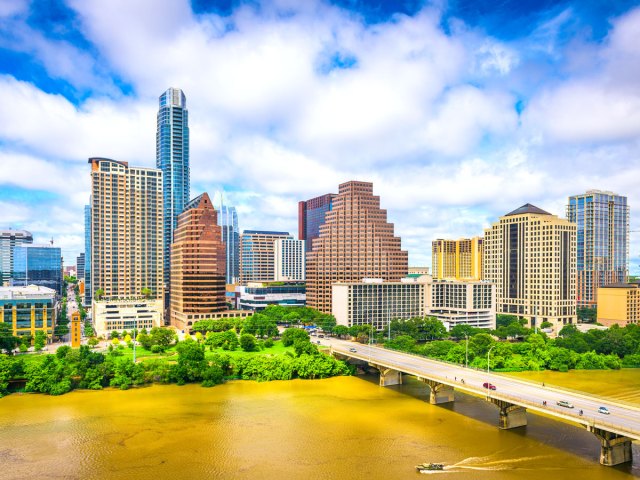
When engineers remodeled Austin’s Congress Avenue Bridge in 1982, they didn’t know that the crevices they added were perfect bat roosts — that is, until bats started showing up by the thousands. Although some people initially reacted to the growing colony with alarm, conservationists pointed out that the nocturnal creatures pose no danger to humans (as long as people don’t try to handle them). Plus, the bats help keep Austin bug-free. Congress Avenue bridge is now home to some 1.5 million bats. On summer nights, hundreds of people gather at the bridge to watch them emerge.
Golden Gate Bridge – San Francisco, California
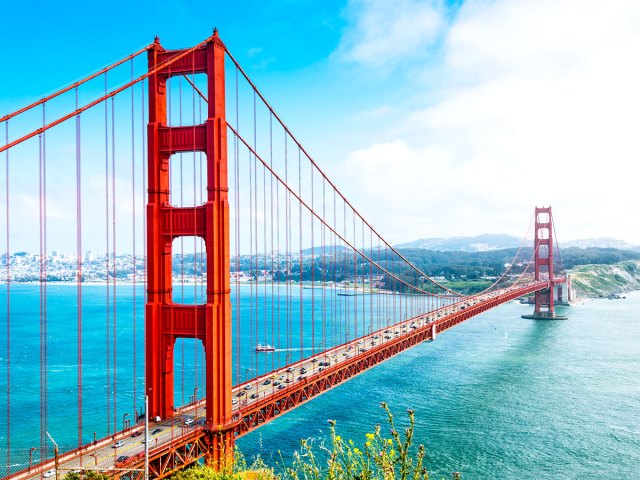
Perhaps the most famous bridge in America, the Golden Gate Bridge was named after the narrow, 300-foot-deep Golden Gate Strait which flows underneath it and links the Pacific Ocean to the San Francisco Bay. The strait itself was named after the Golden Horn of the Bosphorus in Istanbul, Turkey, which forms the city’s natural harbor. The harbor of San Francisco reminded explorer John C. Fremont of the other harbor across the Atlantic, so in 1846, he named it “Chrysopylae” in Greek, which translates to “golden gate.” He also wrote that the strait was a “golden gate to train with the Orient.” The 8,980-foot-long Golden Gate Bridge spanning the strait was completed in 1937.
While it’s difficult to imagine the Golden Gate Bridge in any other color than its iconic burnt orange, it almost didn’t turn out that way. The Navy originally lobbied for the bridge to be painted with black and yellow stripes to make it more visible to ships passing through the notoriously foggy Bay Area. When the steel for the new bridge arrived in San Francisco, some of it was coated in a distinctive reddish-orange primer to help protect it from corrosion and wear. The bridge’s architect liked the color, compared to the typical black and gray tones of other bridges, and advocated for its use in the final bridge. While the Navy didn’t get their black and yellow stripes, the color did answer their original ask — that the bridge become an unmistakable sight on the San Francisco Bay.
More from our network
Daily Passport is part of Inbox Studio, which publishes content that uplifts, informs, and inspires.

